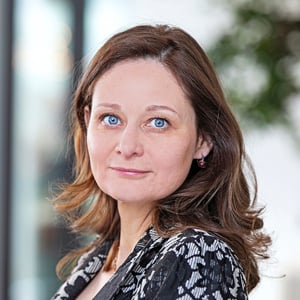Titled “SFDR & Taxonomy - highlights and current developments”, the session focused on two of the most hotly debated topics within the European private equity industry at this moment - Sustainable Finance Disclosure Regulation (SFDR) and the EU Taxonomy.
Propelled by the ambition of the European Commission (EC) to meet the objectives of the Paris Climate Agreement, both pieces of legislation provide for several challenges for fund managers. It therefore came as no surprise speakers Maaike van der Schoot (Principal and Head of Responsible Investments at AlpInvest Partners), and Vanessa Marquette and Roderik Boogaard (both partner at Loyens & Loeff and ESG legislation specialist) dished up some interesting talking points.
With the first talking point being ESG due diligence, Ms. Van der Schoot explained that at AlpInvest, this type of assessment is already performed since 2009 and is actually of great importance - “We mainly focus on the ESG statement and its implementation, both in terms of investment selection and portfolio monitoring. But we also look at communication about ESG and nowadays at Diversity, Equity and Inclusion, climate change performance and of course SFDR as well”.
When asked what she expects of fund managers in respect to ESG risks potentially impacting the value of an investment, Ms. Van der Schoot answered that a structured approach to ESG in your core processes, including your risk assessment, is absolutely vital for identifying opportunities, because “ultimately our clients want a good financial return on their investments.” This is also why AlpInvest has invested in a ESG risk assessment tool, overseeing all companies in their portfolio in multiple geographies”.
After a brief explanation by Mr. Boogaard about the difference between “Article 8” and “Article 9” investment classifications as defined under the SFDR, Ms. Van der Schoot added that she sees in the European investment market Article 8 is really becoming the benchmark, with the Nordics and France where it is often even considered a minimal commitment. Pursuance of an Article 9 label seems to be a bit slower according to Ms. Van der Schoot – “It seems a bit more complicated and therefore the persons running impact strategies do not seem to really know yet how they can make it work for their fund”.
As part of the second talking point, Ms. Marquette explained how the EU Taxonomy intends to be a very detailed and technical list of all the economic activities per sector of what the EC deemed to be an environmentally sustainable activity. This as to prevent the sustainable investment market to be subject to “greenwashing”. This framework, sometimes dubbed “The Green List” is evolutive. It provides full guidance on around 100 economic activities. Adding to this, the Taxonomy, albeit officially a backbone of SFDR, was launched after SFDR itself, meaning a misalignment of definitions was created. In particular, SFDR recognizes social and governance objectives as sustainable when the Taxonomy only considers with environmentally sustainable activities. Ms. Marquette – “This means that an activity under the SFDR may not necessarily be considered sustainable under the Taxonomy”.
With the SFDR having a more broad definition, Ms. Marquette pointed out that this creates challenges when it comes Taxonomy alignment reporting under the SFDR but that “the EC lately has recognised this”. To help investors with their Taxonomy alignment reporting, it has for instance issued a “EU Taxonomy calculator”. Also it has provided legal clarifications, one being that of a “safe harbour” which states that in principle an investment is considered sustainable under SFDR when the investment in an economic activity which is marked sustainable under the EU Taxonomy. Also, the EC addressed the data gap for the reporting of companies in a portfolio which do not need to report yet or are not located in the EU. Ms. Marquette – “In this case, a complementary assessment or an own estimate is allowed to determine alignment with the EU Taxonomy”.
After closing of the session by Ms. Marquette and equipped with practical findings into EU sustainable investment legislation and Private Equity market developments, it is time to leave the beautiful bird’s eye view of Amsterdam behind and head out for new green investment opportunities.







